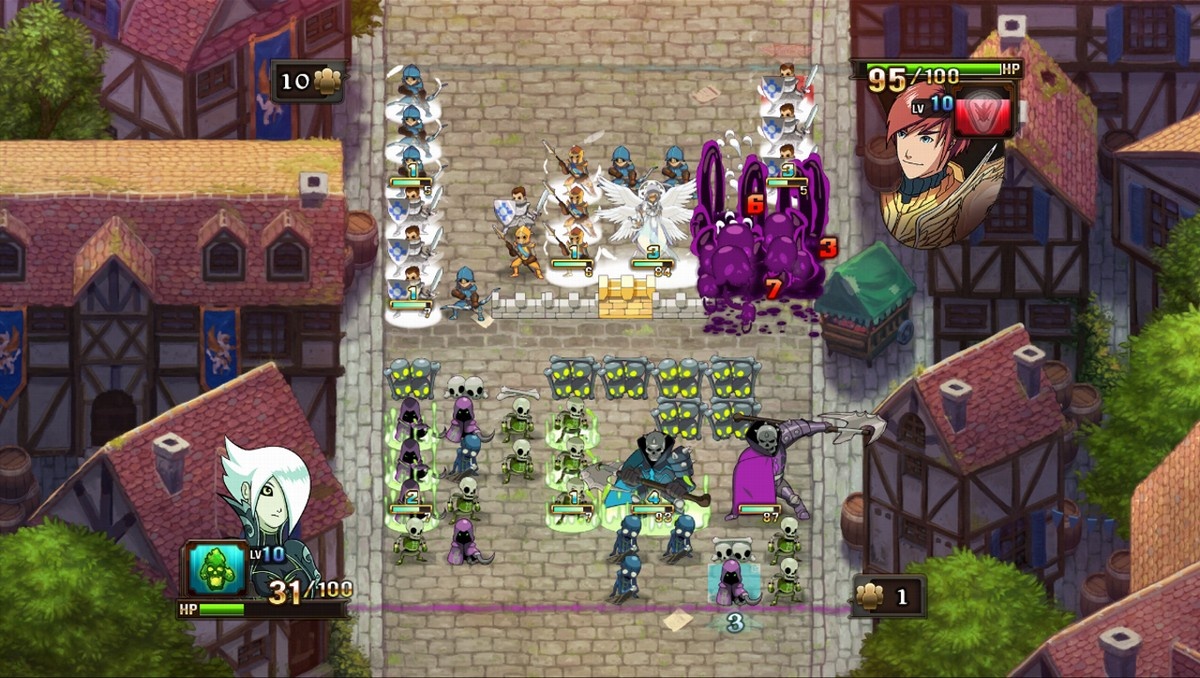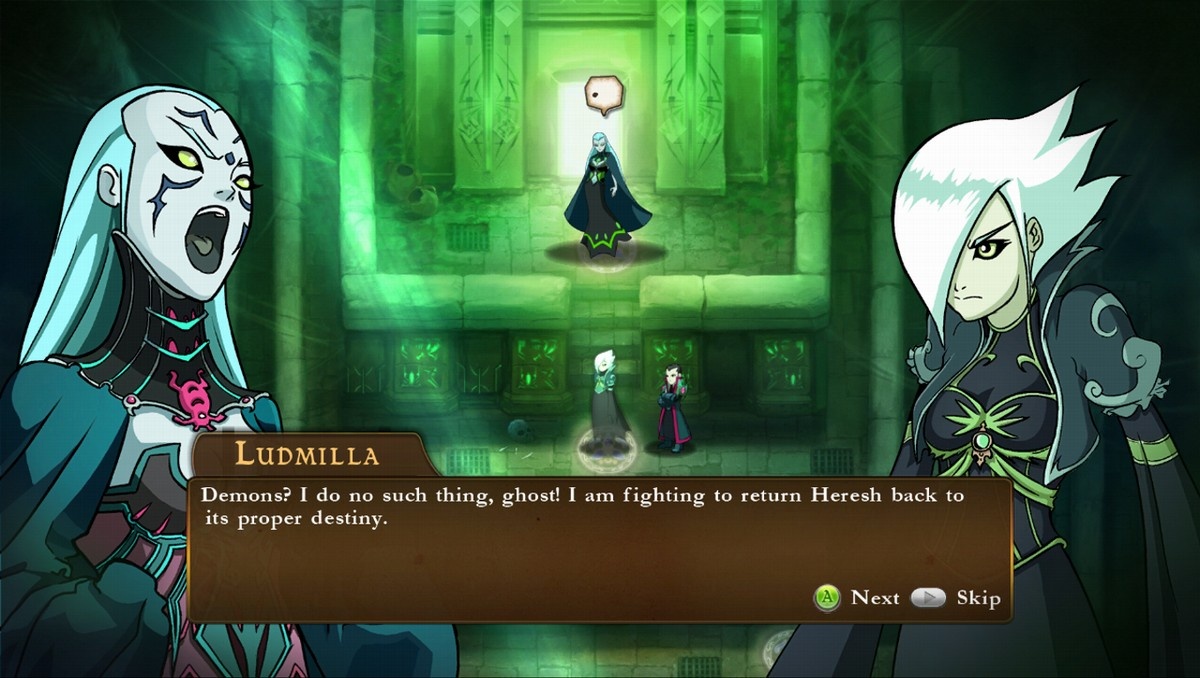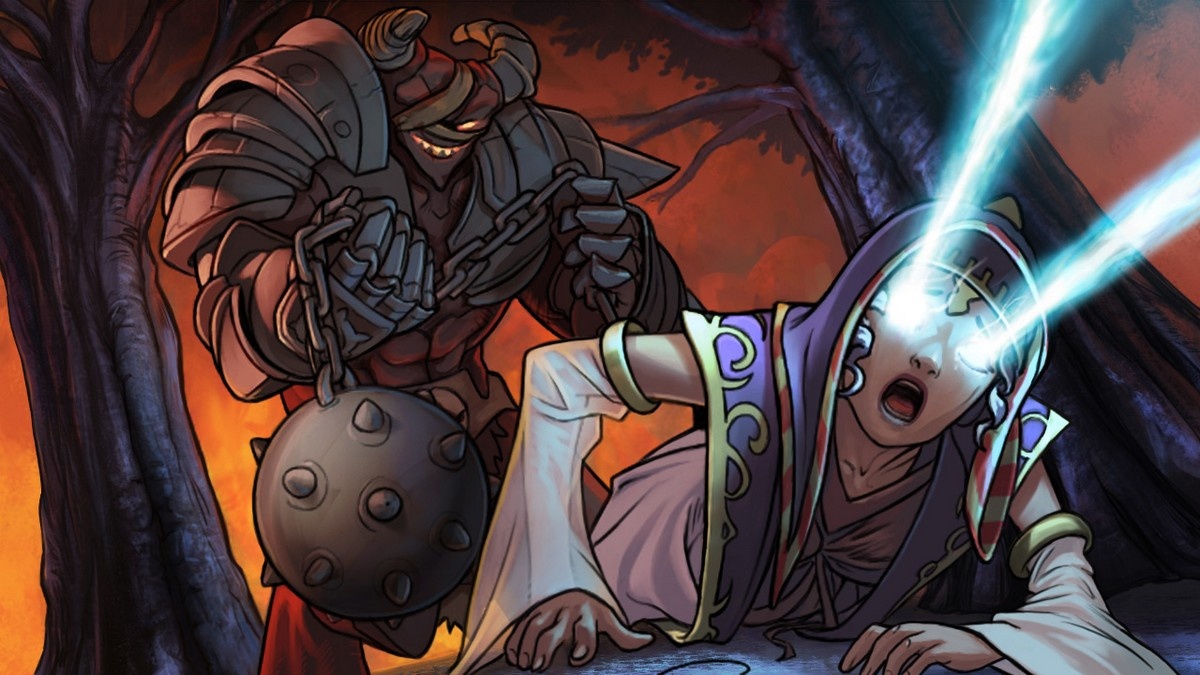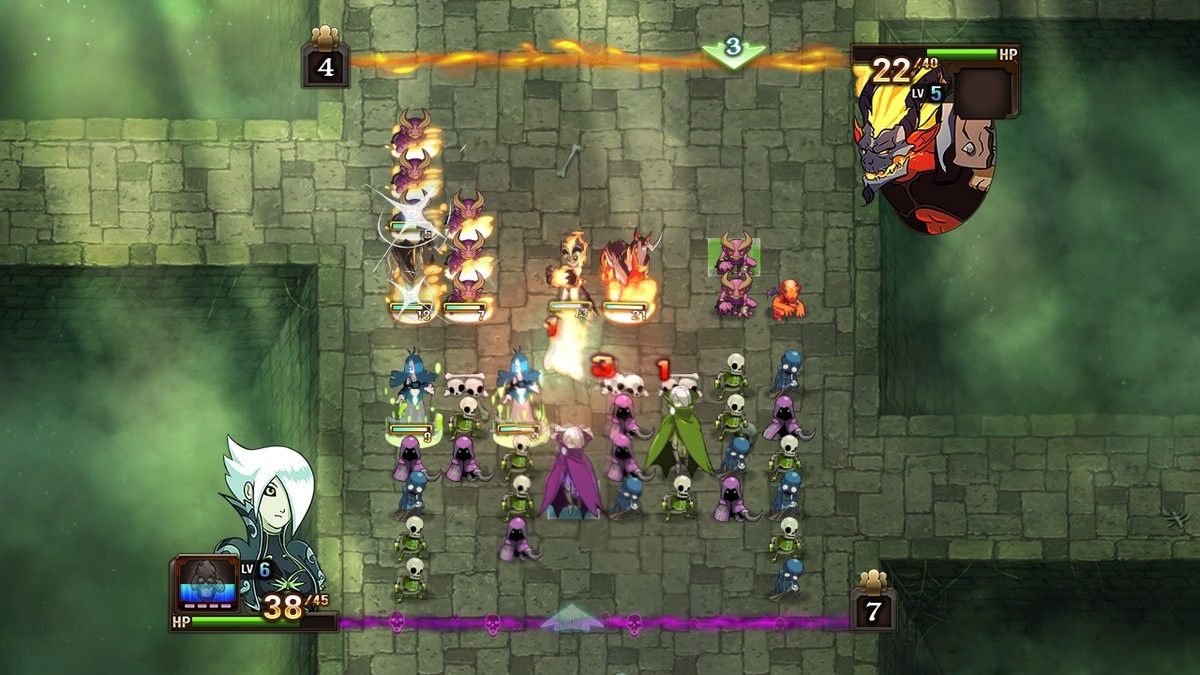A blending of match-three battle puzzles, strategic role playing, and a cute fantasy storyline is at the heart of Might & Magic: Clash of Heroes. This mostly straight-up port of 2009's Nintendo DS hit retains all of the portable's cunning battle design and charm, simply moving the handheld game to your television. At times, the game feels a little small for the living room, with text and unit graphics a bit tiny for a big-screen TV. But the intricate turn-based battles and the involving fantasy story have been moved over to consoles in all of their addictive glory, making it one of those games that practically superglues a gamepad into your hands.

Despite the similar name, Clash of Heroes isn't quite a Heroes of Might & Magic game. You might be confused in the beginning, however, because the basic structure here is nearly identical to those predecessors. The main mode of play is a campaign where you lead five young heroes in the fantasy land of Ashan (featured in Heroes of Might and Magic V on the PC) into battle while trying to soothe tensions that sneaky demons have stirred up between the realm's leading kingdoms. You start off with a hero who gains experience, casts spells, and equips artifacts. And, you lead units of D&D refugees into battle against foes in one-on-one arena-styled duels. Quick Battle mode and multiplayer are both available online and off, letting you stage one-versus-one or two-versus-two battles with customized armies (new to Clash of Heroes for consoles). Cosmetically, the game looks and feels different from previous releases in the Heroes of Might & Magic series, with the art tipped toward cheerful, colorful anime, and the mostly lighthearted plot aimed at an all-ages crowd.
But everything changes on the battlefield. Instead of pitting stacks of creatures against one another as in the Heroes games, here, you do battle in a Puzzle Quest-derived match-three format with rows of troops aligned into grids. You have a limited number of moves to make for each turn and can only shift the last unit in a line or remove a unit farther up in a column. Generally, you try to set up an attack or a defense with each move. Attacks are arranged by lining up same-colored units vertically aimed toward the enemy formation. If you place three green elven hunters in a row, for example, they chain, which means that they activate and start charging for an attack in a subsequent turn. When troops do attack, they generally charge straight into the enemy columns, doing damage to any foes or fortifications along the way. The goal is to get to the back of the enemy line, where you inflict damage to your opponent's health. Bonus damage is earned by linking multiple attacks of the same color at the same time, as well as by fusing two attack groups stacked on top of one another. Defenses are arranged in the same way, although here, you line up same-colored units horizontally. This creates walls that block enemy assaults and are invaluable for keeping powerhouse foes away from your back line.

In the campaign, gold, ore, and blood crystals earned through quests and side quests like bounty hunting or simply discovered in chests by the side of the road are used to buy units that are then added to your army. Units come in a variety of types, all with different special abilities that allow for bonus attacks, speedy charge times, health regeneration, leaps or flight over walls, and the like. You have access to a number of heroes and monsters drawn from the five kingdoms in Ashan, along with the demonic hordes. So you battle with elves, fantasy knights, cornball undead that look like they escaped from Grim Fandango, demons, wizards, and pretty much the rest of the monster manual refugees that populate traditional Heroes of Might & Magic games.
In addition to the basic concepts described above for low-end grunts, you field elite and champion units that activate when you stack two or four same-color units directly behind them. Successfully setting up one of these units requires some finagling because they take up a lot of territory on the battle grid, but pulling off an attack with one tends to be absolutely devastating on the enemy. You can launch root attacks with treants, for instance, or send green dragons flying over enemy walls and lay waste to everything beyond with acid breath. Heroes also have special spells that charge when you do damage during battles. Magic arrows, lightning bolts, and fireballs are just three of the incantations that can be deployed at key moments to take down enemy defenses or obliterate health points. Heroes can also equip artifacts that provide the usual attack and defense buffs, along with special frills like regenerating walls and boosting experience points.

Despite all of these layers it's not difficult to get a handle on the basics, but to succeed beyond the first few fights you need to be quick study. Soon enough you'll be pulling off tricky fusion and chain attacks with relative ease. The game isn't exactly easy on you, though, especially in the beginning. After the first few simple battles, the difficulty shoots up dramatically, putting you into positions where you have to consistently make smart, efficient moves or see the enemies mop the floor with you. These encounters are made more challenging by the presence of high-powered enemy elite and champion units. If you let just one of them get off an attack in these battles, you generally lose instantly because of their high attack damages and your low early health points. This can be a tough lesson to learn early on because these devastating attacks that generate an astonishing 40 to 50 hit points of damage come as a huge surprise, given how grunt troops do no more than 10 at a shot and usually much fewer. Even though there are some battles that you simply can't win without a bit of trial and error, you can still always see the light at the end of the tunnel. You feel like you're learning the game while you're having your head handed to you, so instead of being frustrated, you keep going with the story and getting better with every fight. The campaign also features side quest puzzle battles where you need to win in just a single turn, which are great exercises that teach you how to get the absolute most out of the limited number of moves available.
Porting the game from the small screens of the Nintendo DS to the Xbox 360 and PlayStation 3 has not been accomplished without some problems. There is a noticeable issue here with scale. While the graphics are big, sharp, and colorful during the talking-head cutscenes, movement and battle screens appear scrunched. Text is very small. Lines aren't quite too small to read, but the font size is definitely a lot tinier than it should be for a game that is supposed to be played on the couch at a reasonable distance from your TV. Battle graphics are also somewhat indistinct. Units seem tiny; their features are smashed together to the point that you can't really make out fine details. This generally doesn't affect gameplay because you can usually tell units apart. Still, some unit colors are shown only as highlights that can be hard to see, so it is possible to mess up and mistake, say, a green deer for a blue one. Battle screens are the least-attractive part of the game, which is really unfortunate because that is where you spend the majority of your time. Another, more minor issue is the new multiplayer mode of play. While it is diverting to duel online with other human players, there isn't enough to the one-off battles featured to keep you coming back for long. Something like a full-blown tournament mode might have livened things up a lot.

Might & Magic: Clash of Heroes is one of those "just one more turn" games that is nearly impossible to stop playing. Battles are tough and sometimes unfair given the surprises that await you as you fight your way across the land of Ashan, but the puzzles are still fiendishly addictive. The game's roots on the tiny screen of the Nintendo DS are apparent in the often Lilliputian graphics and text, but when you're caught up in this irresistible adventure, these flaws hardly matter.